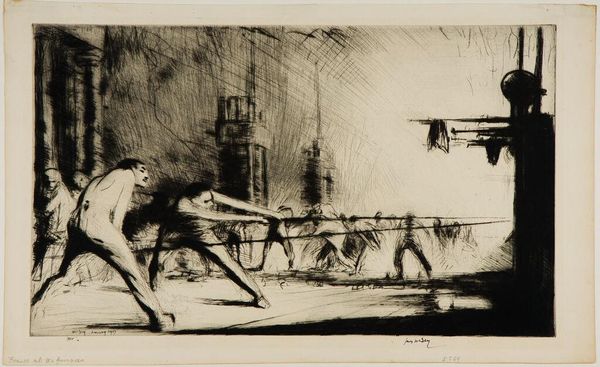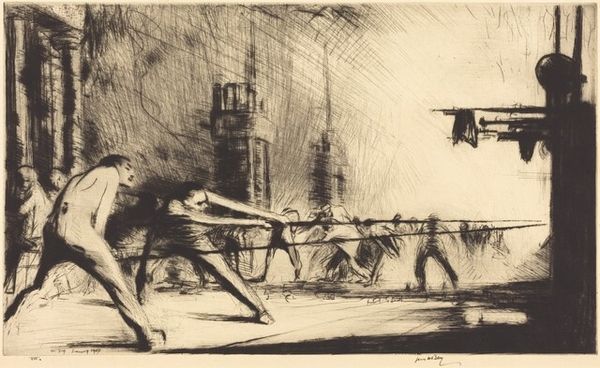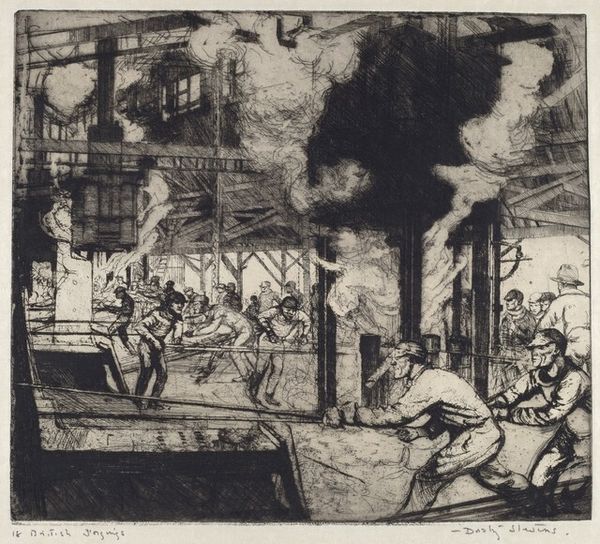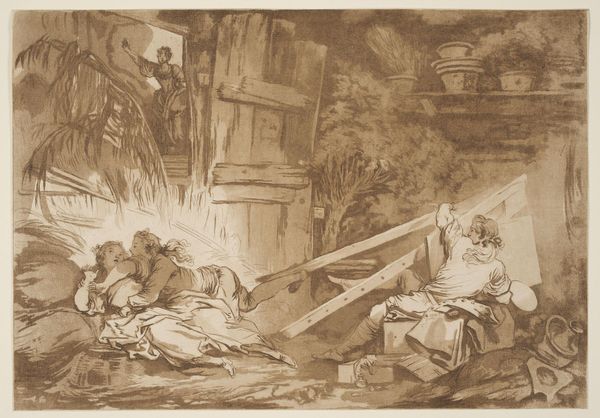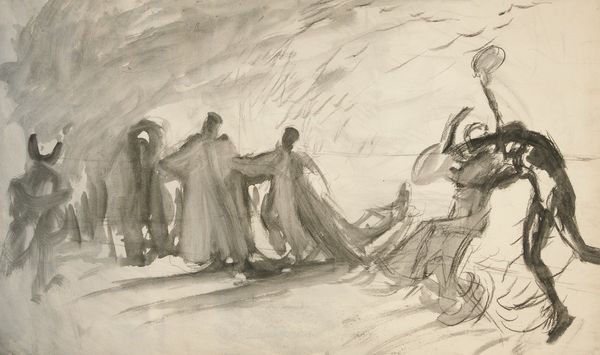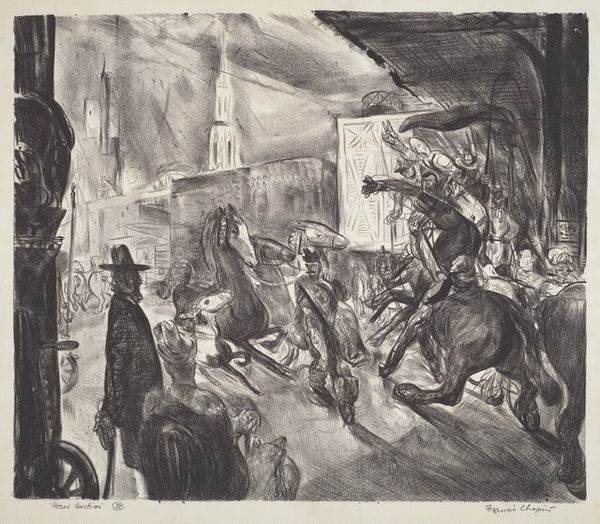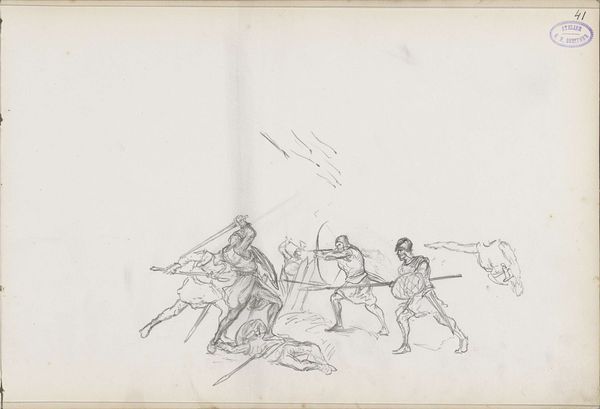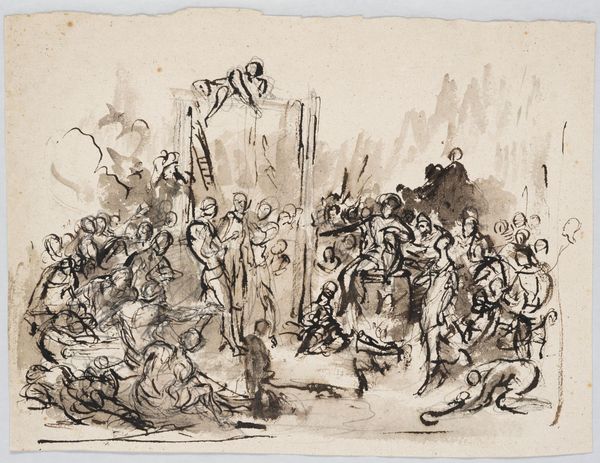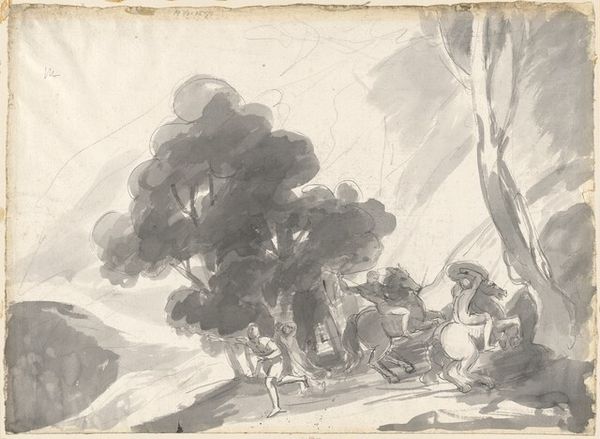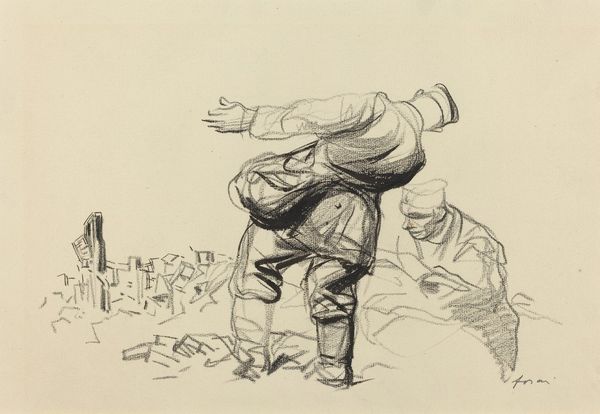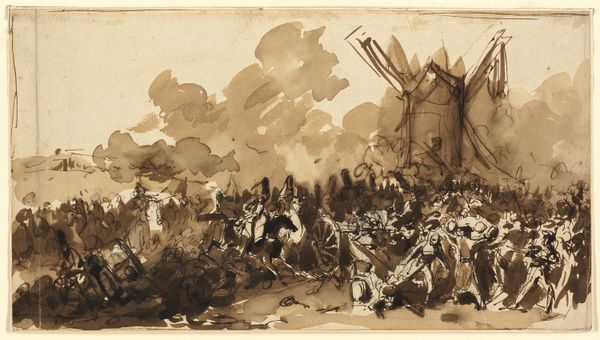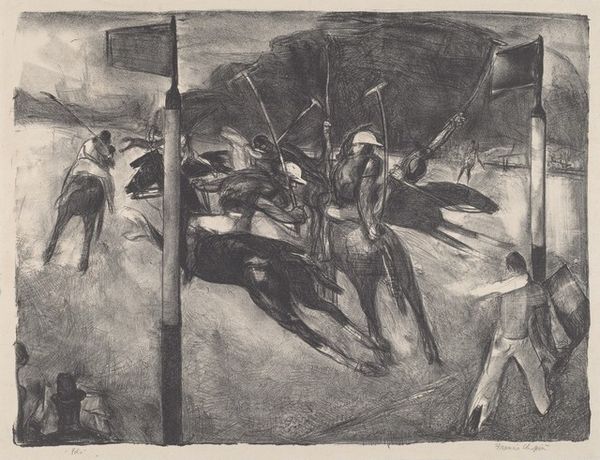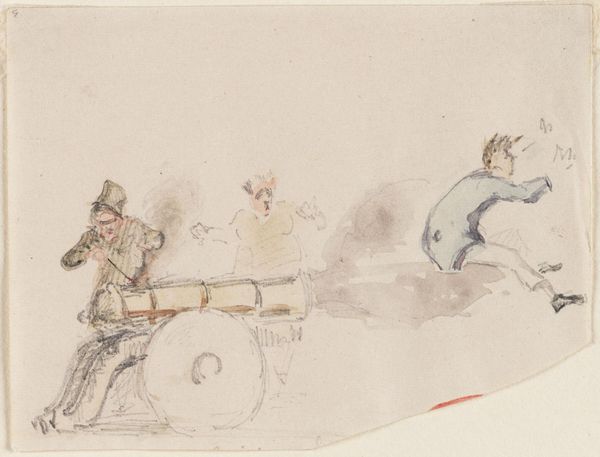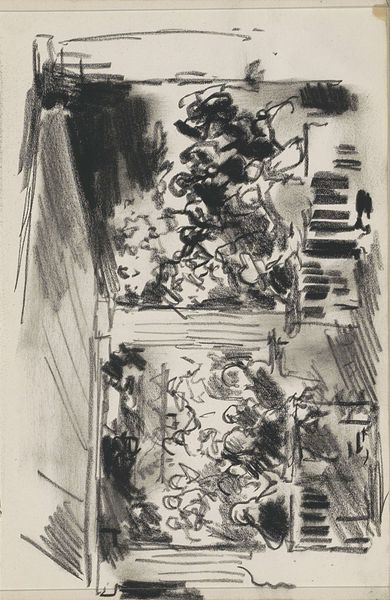
drawing, watercolor
#
drawing
#
landscape
#
watercolor
#
expressionism
#
watercolour illustration
#
history-painting
#
watercolor
Dimensions: overall: 33.6 x 48.5 cm (13 1/4 x 19 1/8 in.)
Copyright: National Gallery of Art: CC0 1.0
Curator: James McBey's "France at Her Furnaces," created in 1917, offers us a stark view of industry during wartime. The watercolor and ink drawing vibrates with an intensity created through an evident balance of shadow and light. Editor: It strikes me immediately as incredibly bleak. The limited color palette heightens that somber tone, emphasizing the sheer labor on display; the skeletal architecture looming in the background adds an aura of foreboding. Curator: Indeed, McBey uses a muted palette strategically, restricting hues to grays, browns, and russet tones to augment the atmosphere. Observe the composition; how the diagonal lines of the workers' bodies pull the eye into the vanishing point at the furnace’s heart. It’s masterful in creating a sense of depth and focusing our attention. Editor: And that repetition of human forms; it becomes almost abstract, the workers merging into a single machine fueling the industrial complex, stripping them of individual identity, becoming a collective sacrifice of human exertion for an unseen aim. Consider the process, too, the laborious action of creating steel as directly linked to the back-breaking human efforts pictured, creating a mirror image of human toil in war and art. Curator: Structurally, consider the bold use of negative space around the figures which contrasts to the heavy inked outlines. It highlights the strenuous tension, with all the implied human cost central to Expressionism. The figures also, drawn somewhat idealistically, become representative, symbolizing the many toiling anonymously within the furnace. Editor: The drawing exposes how resources were spent; the artist, choosing industrial labour during WWI as worthy artistic material, implicitly questions those efforts. What were their social repercussions? Curator: Ultimately, "France at Her Furnaces" uses dynamic compositional strategies alongside limited hues to achieve a potent artistic message reflecting war. Editor: Yes, an examination that leads one to consider the materials of war production interwoven inextricably with social concerns during the fraught days of conflict, now forever captured through process and imagery.
Comments
No comments
Be the first to comment and join the conversation on the ultimate creative platform.
